APD and PIN Photodiodes: Our Products
An APD is a photodetector that provides a built-in first stage of gain via avalanche multiplication. Provision of this internal signal gain is what differentiates APD Photodiodes from PIN photodiodes. APDs are widely used in instrumentation and aerospace applications, offering a combination of high speed and high sensitivity.
Providing higher sensitivity than standard photodiodes, APDs are ideal for extreme low-level light detection and photon counting. Available in Silicon or InGaAs, these devices provide detectivity from 400 nm – 1100 nm. Multiple configurations are available to provide a wide range of sensitivity and speed options, with additional pre-amplifier and filter options available to tailor the device to meet specific requirements.
The use of APDs instead of PIN photodetectors will result in improved sensitivity in many applications. In general, APDs are useful in applications where the noise of the amplifier is high — i.e. much higher than the noise in the PIN photodetector. Thus, although an APD is always noisier than the equivalent PIN, improved signal-to-noise can be achieved in the system for APD gains up to the point where the noise of the APD is comparable to that of the amplifier. In very low bandwidth systems, the noise of the amplifier is likely to be very low, in which case, the APD may not be the best choice.
Excelitas offer products including:
- High-volume, cost effective silicon APDs for Range Finding and Laser Meter applications.
- Large area, UV-enhanced APDs for Molecular Imaging (PET).
- Long wavelength enhanced APDs for Analytical Applications.
- Multi element and quadrant APDs for Analytical Instruments.
- Standard, high performing APDs for Industrial applications.
Silicon PIN photodiodes are reverse-biased PIN diodes which detect light and generate current as a result. Silicon PIN photodiodes are available with a wide variety of active areas to accommodate many varied applications. The PIN photodiode structure has an intrinsic layer within the depletion region, which allows high quantum efficiency and fast response for detection of photons in the 400 nm to 1100 nm range. PIN diodes can be suitable for telecommunications and data transmission.
Options from Excelitas include the YAG series, quadrant detectors, UV enhanced PIN photodiodes and the C30xxx range which covers the spectral range from 220nm through to 1700nm.
The YAG series devices are high quality large area PIN photodiodes that use a thicker Si material to enhance the near IR response. Excelitas quadrant detectors are designed with 4 pie-shaped quadrant sections – this reduces the dead space between each quadrant to almost zero, and allows precise beam positioning to be achieved. Each quadrant is connected to an isolated lead.
The C30741 Silicon PIN diode provides fast response and good quantum efficiency between 300 nm and 1100 nm. These photodiodes are offered in plastic package, either TO style or SMD packages with a visible blocking filter option, and are designed for high-speed, high-volume production and cost sensitive applications.
The Excelitas UV series are high quality Si PIN photodiodes in hermetically sealed TO packages, designed for the 220nm to 1100nm wavelength region with enhanced operation in the UV range. Low noise detection is achieved by operating the UV series in photovoltaic mode (0V bias).
The InGaAs PIN detectors provide high quantum efficiency from 800 nm to 1700nm. They feature low capacitance for extended bandwidth, high resistance for high sensitivity, high linearity, and uniformity within 2% across the detector active area.
Integrated APD Modules and PIN diode modules from Excelitas offer easy implementation into high performing Instruments. An APD module is comprised of an APD photodetector and a transimpedance amplifier in the same hermetically sealed package; a PIN diode module is similar but with a PIN photodetector. Having both amplifier and photodetector in the same package allows low noise pickup from the surrounding environment and reduces parasitic capacitances from interconnect allowing lower noise operation.
LLAM
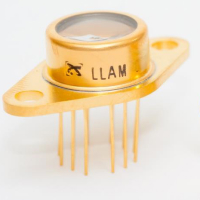
The LLAM series of Silicon and InGaAs avalanche photodiodes (APD) receiver modules feature an APD, thermoelectric cooler (TEC) and a hybrid, all in the same hermetically-sealed modified 12-lead TO-66 flange package for increased heat sinking. The use of a TEC eases the burden on the APD bias control to insure constant responsivity over a 5°C to 40°C ambient temperature range.
Long Wavelength 1060nm Enhanced APDs
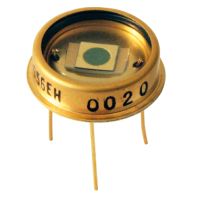
Excelitas’ C30954EH, C30955EH, and C30956EH are general purpose silicon avalanche photodiodes made using a double-diffused “reach through” structure. The design of these photodiodes is such that their long wave response (i.e. > 900 nm) has been enhanced without introducing any undesirable properties. High Quantum Efficiency of up to 40% at 1060nm while retaining low noise, low capacitance, and fast rise and fall times.
APDs for Rangefinding
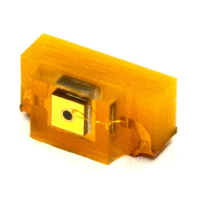
The Excelitas C30737 series silicon APDs provide high responsivity between 500 nm and 1000 nm as well as extremely fast rise times at all wavelengths, with a frequency response above 1 GHz for bandwidth-optimised versions. The C30724, as a low gain APD, can be operated at a fixed voltage without the need for temperature compensation.
UV Enhanced APDs
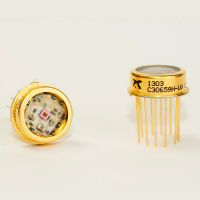
The C30739ECERH Silicon Avalanche Photodiode (APD) is intended for use in a wide variety of broadband low light level applications covering the spectral range from below 400 to over 700 nm. It has low noise, low capacitance and high gain. It is designed to have an enhanced short wavelength sensitivity, with quantum efficiency of 60 % at 430 nm.
InGaAs APDs
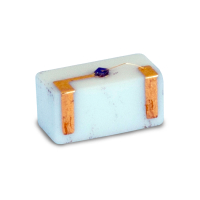
The C30644, C30645 and C30662 Series APDs are high speed, large area InGaAs/lnP avalanche photodiodes. These devices provide large quantum efficiency, (QE), high responsivity and low noise in the spectral range between 1100 nm and 1700 nm, with standard active areas up to 200 µm in diameter. They are optimized for use at a wavelength of 1550 nm, ideally suitable for use in eye-safe laser range finding systems.
APD Arrays
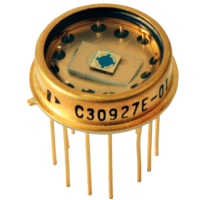
The C30927 series of quadrant Si Avalanche Photodiode and the C30985E multi-element APD array utilize the double-diffused “reach-through” structure. This structure provides ultra high sensitivity at 400-1000 nm.
PIN Diodes for Industrial Applications
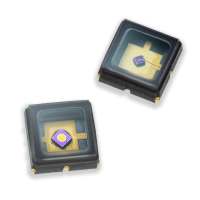
Silicon and InGaAs PIN photodiodes are available with a wide variety of active areas to accommodate many varied applications. High quantum efficiency and fast response for detection of photons in the 400nm to 1100nm range. Overview data covering C3xxxx and UV-enhanced ranges.
YAG Silicon Quadrants
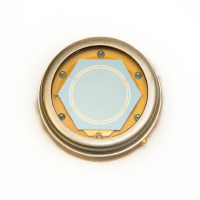
The YAG series devices are high quality large area PIN photodiodes that use a thicker Si material to enhance the near IR response. Excelitas quadrant detectors are designed with 4 pie-shaped quadrant sections – this reduces the dead space between each quadrant to almost zero, and allows precise beam positioning to be achieved. Each quadrant is connected to an isolated lead.
Integrated Modules – PIN and APD Hybrid Receivers
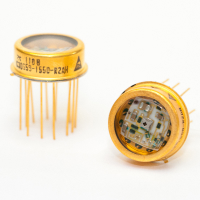
These hybrid receivers comprise of a photodetector (PIN or APD) and a transimpedance amplifier in the same hermetically-sealed package. Having both amplifier and photodetector in the same package allows low noise pickup from the surrounding environment and reduces parasitic capacitances from interconnect allowing lower noise operation.
C30659-UV-1

Excelitas Technologies’ C30659-UV-1 includes a UV enhanced Si Avalanche Photodiode (APD) with a hybrid preamplifier, in the same hermetically-sealed TO-8 package, to allow for ultra low noise operation. The UV Enhanced Si APDs provide very good response between 400 nm and 950 nm and have very fast rise- and fall-times at all wavelengths. The preamplifier section of the module uses a very low noise GaAs FET front end designed to operate at higher transimpedance than our regular C30950 Series.
CIPRM
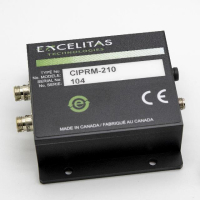
In the CIPRM-1 series balanced optical receiver, Excelitas has incorporated the best features of high performance InGaAs photodiodes and a low noise, high gain transimpedance amplifier to offer a practical solution to detect small changes above the interfering noise floor of an incoming signal. The advantage is that the common optical noise is cancelled out. This coherent InGaAs PIN balanced receiver module incorporates two low-noise photodiodes with well-matched responsivity in order to ensure a high common mode rejection ratio (CMRR). It has two single mode fibre optic inputs, an RF output, electrical supply inputs, and two photo-current monitor outputs. The CIPRM modules come in a robust casing with flange mounting holes for securing the module to working surfaces or platforms. Combined with a wide operating temperature range, the CIPRM can work in some of the toughest and harshest environments. The CIPRM series modules are available either fibered or FC connectorised.
